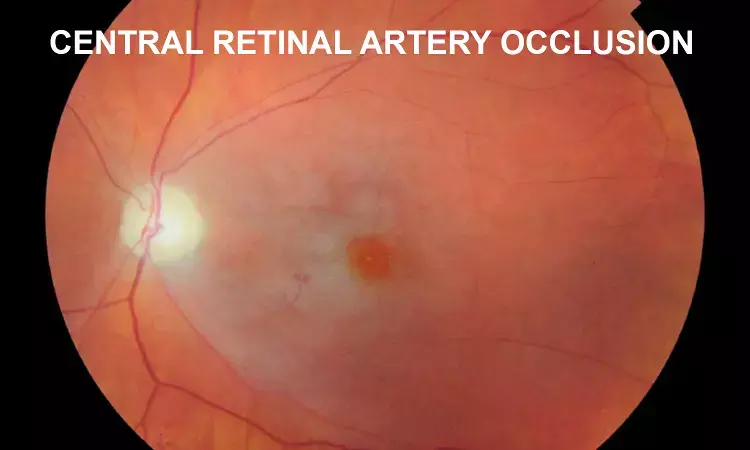- Home
- Medical news & Guidelines
- Anesthesiology
- Cardiology and CTVS
- Critical Care
- Dentistry
- Dermatology
- Diabetes and Endocrinology
- ENT
- Gastroenterology
- Medicine
- Nephrology
- Neurology
- Obstretics-Gynaecology
- Oncology
- Ophthalmology
- Orthopaedics
- Pediatrics-Neonatology
- Psychiatry
- Pulmonology
- Radiology
- Surgery
- Urology
- Laboratory Medicine
- Diet
- Nursing
- Paramedical
- Physiotherapy
- Health news
- Fact Check
- Bone Health Fact Check
- Brain Health Fact Check
- Cancer Related Fact Check
- Child Care Fact Check
- Dental and oral health fact check
- Diabetes and metabolic health fact check
- Diet and Nutrition Fact Check
- Eye and ENT Care Fact Check
- Fitness fact check
- Gut health fact check
- Heart health fact check
- Kidney health fact check
- Medical education fact check
- Men's health fact check
- Respiratory fact check
- Skin and hair care fact check
- Vaccine and Immunization fact check
- Women's health fact check
- AYUSH
- State News
- Andaman and Nicobar Islands
- Andhra Pradesh
- Arunachal Pradesh
- Assam
- Bihar
- Chandigarh
- Chattisgarh
- Dadra and Nagar Haveli
- Daman and Diu
- Delhi
- Goa
- Gujarat
- Haryana
- Himachal Pradesh
- Jammu & Kashmir
- Jharkhand
- Karnataka
- Kerala
- Ladakh
- Lakshadweep
- Madhya Pradesh
- Maharashtra
- Manipur
- Meghalaya
- Mizoram
- Nagaland
- Odisha
- Puducherry
- Punjab
- Rajasthan
- Sikkim
- Tamil Nadu
- Telangana
- Tripura
- Uttar Pradesh
- Uttrakhand
- West Bengal
- Medical Education
- Industry
Researchers report high rate of atrial fibrillation after central retinal artery occlusion

USA: Patients with central retinal artery occlusion (CRAO) have a higher rate of atrial fibrillation (AF) as detected by using long-term cardiac monitoring, researchers report in Stroke -- the official publication of the American Heart Association. The higher rate of AF in CRAO patients was comparable to stroke patients.
Central retinal artery occlusion is a form of acute ischemic stroke that can cause sudden, irreversible blindness. Brian Mac Grory, Duke University School of Medicine, Durham, NC, and colleagues aimed to determine the proportion of patients in whom atrial fibrillation is detected by extended cardiac monitoring after CRAO.
For this purpose, the researchers performed a retrospective, observational cohort study. They used data from the Optum deidentified electronic health record of 30.8 million people cross-referenced with the Medtronic CareLink database of 2.7 million people with cardiac monitoring devices in situ. The patients were enrolled in 3 groups: (1) CRAO, (2) cerebral ischemic stroke, and (3) age-, sex-, and comorbidity-matched controls.
The primary endpoint was the detection of new AF -- defined as ≥2 minutes of AF detected on a cardiac monitoring device.
The team reviewed 884 431 patient records in common between the two databases to identify 100 patients with CRAO, 6559 with ischemic stroke, and 1000 matched controls.
Based on the study, the researchers found that:
- After CRAO, the cumulative incidence of new AF at 2 years was 49.6%.
- Patients with CRAO had a higher rate of AF than controls (hazard ratio, 1.64) and a comparable rate to patients with stroke (hazard ratio, 1.01).
- CRAO was associated with a higher incidence of new stroke compared with matched controls (hazard ratio, 2.85).
"The rate of AF detection after CRAO is higher than that seen in age-, sex-, and comorbidity-matched controls and comparable to that seen after ischemic cerebral stroke," wrote the authors. "Paroxysmal AF should be considered as part of the differential etiology of CRAO, and those patients may benefit from long-term cardiac monitoring."
Reference:
The study titled, "Detection of Atrial Fibrillation After Central Retinal Artery Occlusion," is published in the AHA journal Stroke.
DOI: https://www.ahajournals.org/doi/10.1161/STROKEAHA.120.033934
Dr Kamal Kant Kohli-MBBS, DTCD- a chest specialist with more than 30 years of practice and a flair for writing clinical articles, Dr Kamal Kant Kohli joined Medical Dialogues as a Chief Editor of Medical News. Besides writing articles, as an editor, he proofreads and verifies all the medical content published on Medical Dialogues including those coming from journals, studies,medical conferences,guidelines etc. Email: drkohli@medicaldialogues.in. Contact no. 011-43720751


